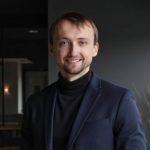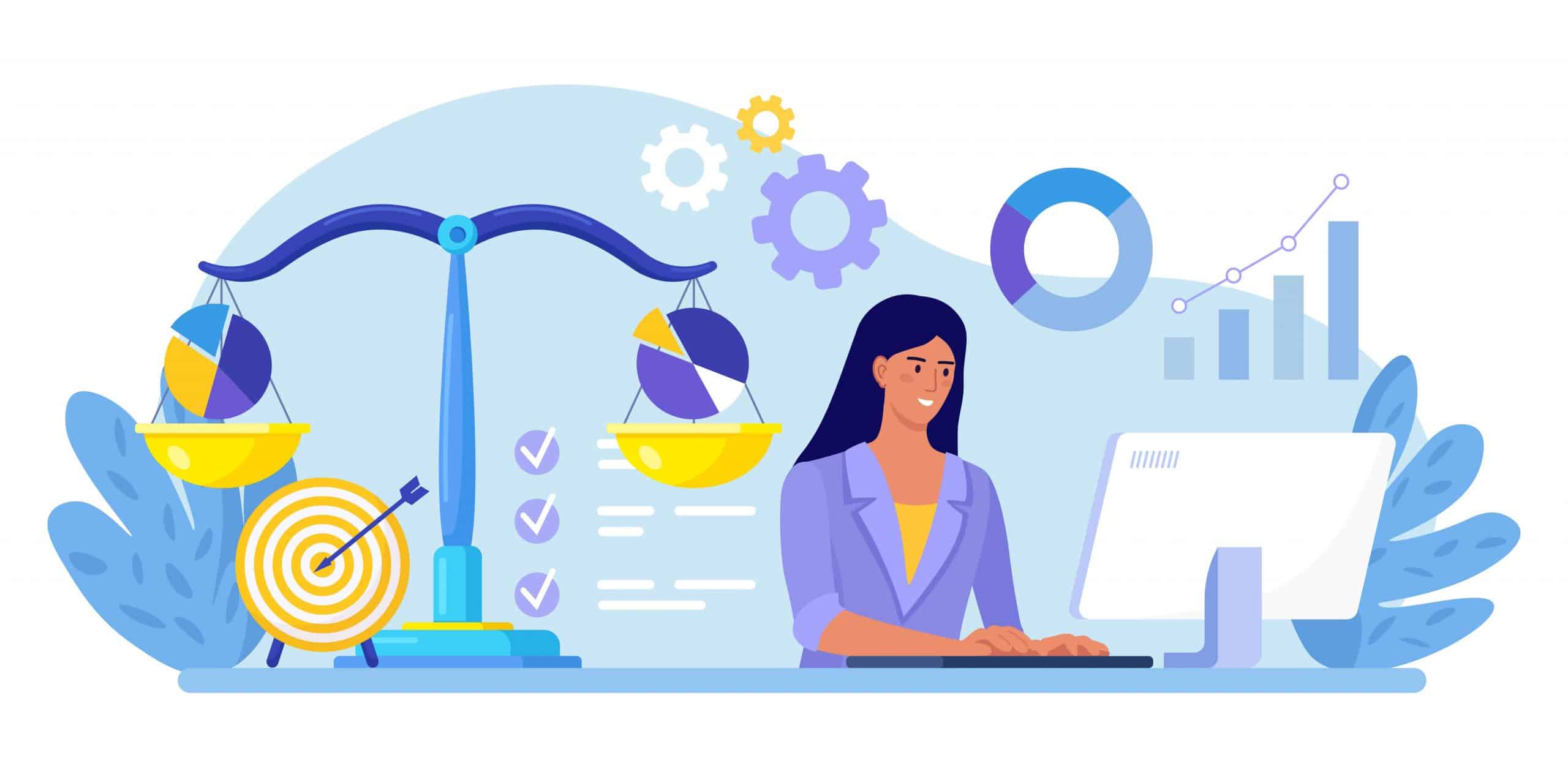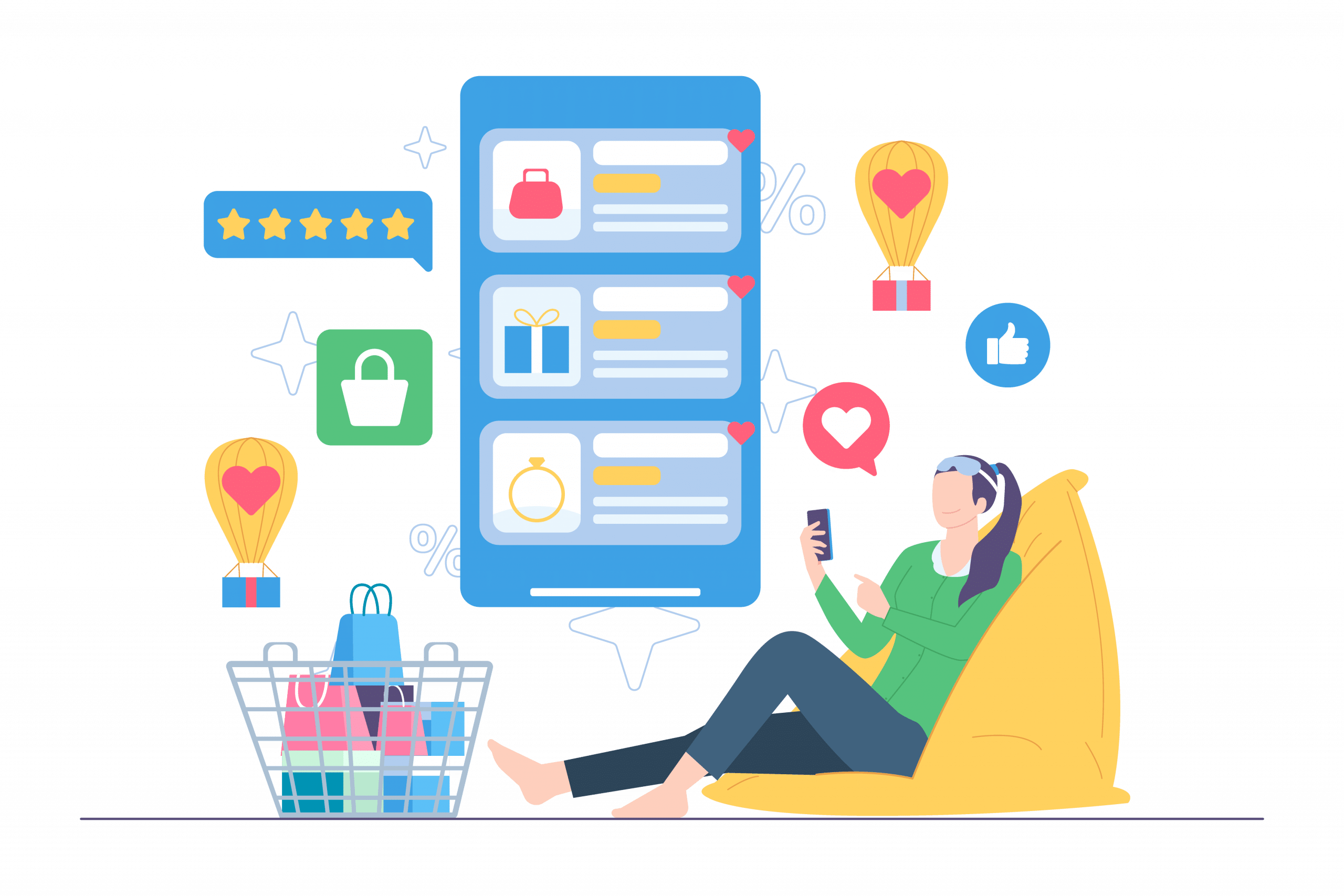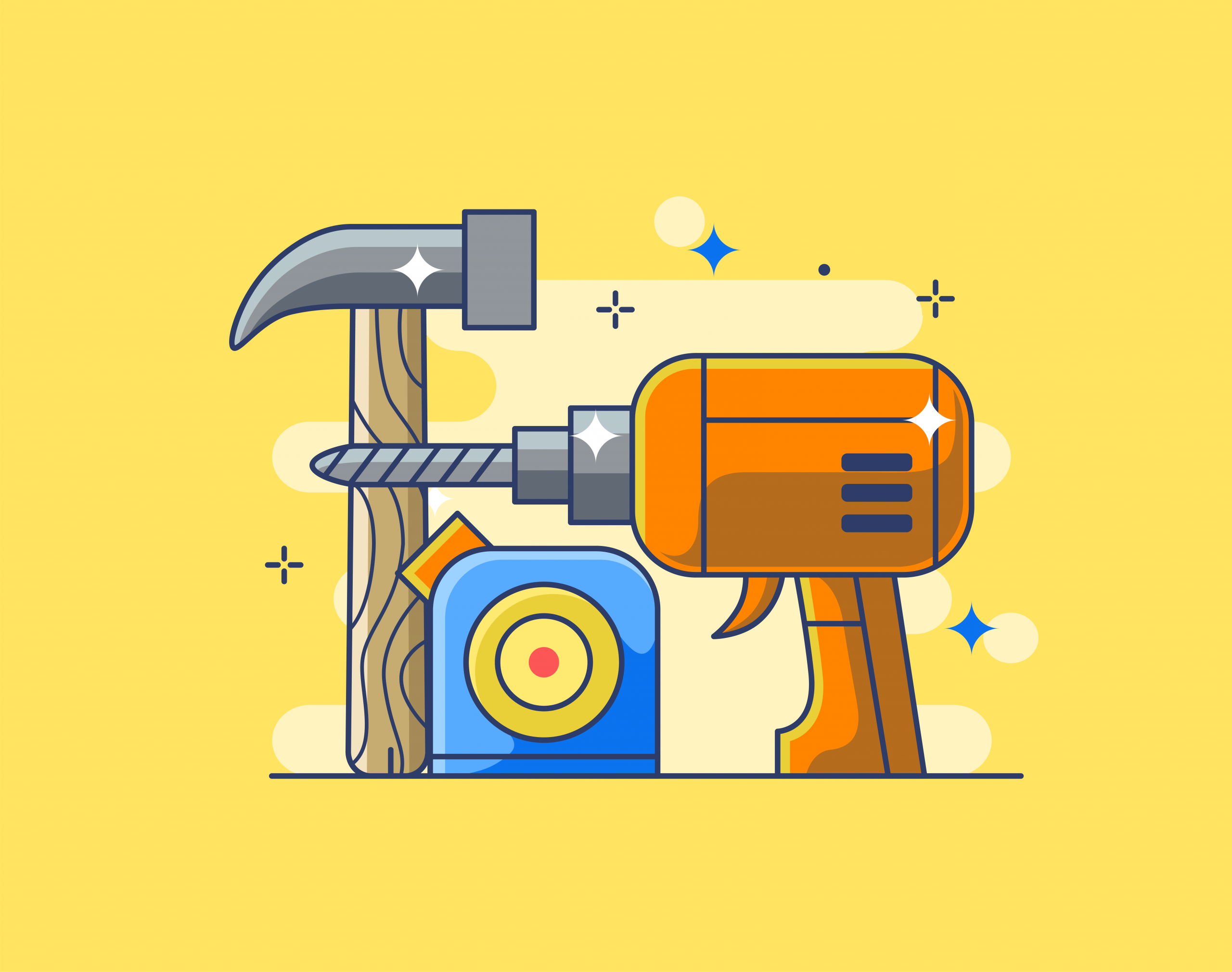How to Build a Marketplace Website and make it successful
Uber, Udemy, and Airbnb—what do these three have in common? Well, they’re all marketplaces that disrupted their respective industries.
If you have an idea that has the potential to become a disruptor, the likes of Uber and Airbnb, you must be preparing to build a marketplace of your own. Be warned: It’s no easy feat to take your idea from just that, an idea, to a full-fledged marketplace with a GMV of millions of dollars.

That said, it’s not impossible, either. Today, let us at GetTrusted share everything we know about marketplace development, from discovery to post-launch, in this guide. We connect founders like you with suitable development partners, so we’re no strangers to assessing marketplace app development projects.
The State of the Marketplace Industry
In 2022 alone, the top 100 marketplaces generated $3.25 trillion in total gross merchandise value, including the sales of products owned by third-party sellers and the marketplace owner itself. That accounts for over half of all ecommerce spending across the globe.
Around a fourth ($869.8 billion) of the top 100 marketplaces’ total GMV was generated by U.S. marketplaces. The country is also home to 51 out of the 100 leading marketplaces.
If you’re looking at the likes of Amazon, Etsy, and eBay and wondering whether there’s still space for another marketplace, just consider that 35 out of the top 100 marketplaces are relatively new. They entered the marketplace game in the last decade, including Zalando, Sweetwater, Mercato Inc., and StockX.
Or, consider the fastest-growing online marketplaces like Cazoo in the U.K., Opendoor in the U.S., and Delivery Hero in Germany. They all showed a compound annual growth rate (CAGR) of over 90% from 2020 to 2022, with Cazoo reaching a whopping 209% CAGR.
Who Leads the Way? Top Marketplaces in 2023-2024
Which online marketplaces end up in the top five depends on the metric you choose to compare them by. For example, if you take the monthly visits, Amazon and eBay will take the first and second places with 5.3 billion and roughly 3 billion visits, respectively. However, Uber takes the number one spot in market cap comparison with almost $50 billion, while Mercado Libre comes in second.
If we compare the global success of online marketplaces using the third-party gross merchandise value (GMV), the picture is different once again, according to the Top 100 Online Marketplaces report:
| Rank | Marketplace | Third-party GMV | Country |
| 1 | Taobao | $701 billion | China |
| 2 | Tmall | $663 billion | China |
| 3 | Amazon | $368 billion | United States |
| 4 | JD.com | $247 billion | China |
| 5 | Shopee | $78 billion | Indonesia |
As you can see, in this case, Amazon comes in only third in this ranking. Plus, three out of five leading marketplaces are based in China.
What’s Your Type? 4 Marketplace Classifications to Consider
Before you flesh out your ideas on building a marketplace, it’s imperative to know what you want your marketplace to be. Will it be a B2B or P2P marketplace? How will you make a profit as the marketplace owner? What products will your sellers offer to customers?
To answer all these questions, you should pinpoint which type of marketplace you’ll be running —using the four classifications below.
B2B vs B2C vs P2P/C2C
Depending on your target audience, both on the seller and customer sides, your marketplace can be classified as:
- Business-to-business (B2B). Both the sellers and customers are businesses. Sale values are the highest, while sales are the longest to close. Your task here is to suggest a solution for business. Examples: Alibaba, Amazon Business, Ankorstore.
- Business-to-customer (B2C). Your sellers are businesses offering goods and services to individual buyers. Your task is to foster competition and product variety while ensuring CX quality. Examples: Amazon, Booking.com, and Fiverr.
- Peer-to-peer (P2P) or customer-to-customer (C2C). Both your sellers and customers are individuals trading goods and services. Your task here is to create a community of sellers and buyers. Examples: Airbnb, Uber, and eBay.
Vertical vs Horizontal
Vertical marketplaces focus on one narrowly defined niche to build and expand their operations. They strive to be the best at the one thing they do. Take Airbnb as an example: you won’t find furniture listings on it. The same goes for vertical marketplaces like Instacart or Etsy—they focus on food delivery and homemade items, respectively.
Horizontal marketplaces, in turn, strive to be a one-size-fits-all solution for users from all (or at least most) walks of life. So, they have a diverse range of products and services powered by many sellers. Think Amazon, Craigslist, and eBay—you can find virtually anything on these platforms.
Commission vs Subscription vs Listing Fee Models
This type of marketplace is based on its monetization model, i.e., how you plan to make a profit as the owner. The three most popular marketplace business models are:
- Commission fees. You take a cut of the sale value once it goes through. You can impose the commission fees on sellers or buyers—or both. It can be challenging to introduce it if sales values are high, however. Examples: Uber, Fiverr.
- Subscription fees. You charge sellers or buyers (or both) a monthly fee for access to your platform. This model fits marketplaces like streaming platforms where no sales actually happen. Examples: Spotify, Netflix.
- Listing fees. You charge sellers a fee every time they want to publish a listing – i.e., before they make a sale. This model works well when you have a proven track record of providing solid customer acquisition opportunities. Examples: Etsy, Craigslist.
But this list isn’t exhaustive. You can also offer your marketplace as a freemium platform or use listing boosts and third-party ads as a revenue stream. Or, you can charge lead fees.
Product vs Service vs Hybrid
What will be traded on your marketplace? If sellers offer physical or digital products, your platforms will be a product marketplace. eBay, Etsy, and Amazon are all examples here.
If your customers come to the platform to find a service, we’re talking about a service marketplace. Fiverr, Uber, and Airbnb all connect service providers and their potential customers.
However, you can also have a mix of physical products and services on your platform, making it a hybrid marketplace. For example, users use Craigslist to find anything from guitar lessons to furniture for sale.
Why Create an Online Marketplace? 5 Benefits of This Business Model
Building a marketplace instead of, say, opening an online store comes with five key benefits. Let’s break them down.
No Inventory Management
As a marketplace owner, you don’t have to produce items yourself or even manage the inventory of products exchanged on your platform. Sellers are in charge of replenishing their stock, storing it somewhere, and shipping the goods once they are sold.
This means you don’t have to worry about upfront investments in production, inventory, warehousing, logistics, and so on.
Easy Scalability
As long as you build a marketplace with scalability in mind, you can grow your business at a faster pace without substantial investments. Save for potentially increasing web hosting costs, increasing your GMV doesn’t entail higher inventory costs or tripling the size of your team. (You will need to invest in building the supply or demand of your marketplace, however.)
Possibility for Multiple Revenue Streams
As an established marketplace, you can have several monetization models in place to avoid putting all eggs in one basket. For example, Etsy doesn’t use only listing fees—it also takes a cut of the transaction value and allows sellers to pay for ads on the marketplace.
However, keep in mind that when you start, you should keep your cut minimal. Otherwise, you risk alienating some or all of your users, causing leakage.
Investor Interest
Investors are in on the marketplace frenzy, and you can benefit from it—if you present a unique, compelling business idea, of course.
For example, Uber attracted $25.2 billion (yes, with a b) in investments over its lifetime. Investors also don’t forego emerging marketplaces: Delivery Hero attracted $9.9 billion in funding, for example.
Consumer Interest
Why do marketplaces account for over half of all e-commerce spending? The reason is simple: they offer convenience to customers. Consumers can discover multiple sellers within one website and, in the case of horizontal marketplaces, they can do all their shopping without leaving the platform at all.
If your marketplace becomes such as shortcut that makes your target audience’s lives easier, you can count on their interest. That, in turn, can mean revenue growth—if you design and run your marketplace in a way that serves convenience, of course.
5 Things to Keep in Mind Before Starting an Online Marketplace
While opting for a marketplace does come with its benefits, it’s not all perks and no challenges. Let’s break down the five most pertinent things you should consider before building a marketplace.
Some Niches Are a Lot Harder to Break Into
If you want to enter the short-term accommodation market, you’ll have to come up against the likes of Airbnb and Booking.com.
While it’s not impossible to emerge as a player in a market with long-time leaders, it’s a more practical approach to carve out a niche for your marketplace—and be the first one in it. It can mean choosing the vertical method, focusing on an underserved location, or offering a unique inventory.
There Should Be a Market Need for Your Marketplace
The second most common reason startups fail is because there’s no market need for their products. So, make sure your product delivers value, both to your sellers and buyers, before building a marketplace.
For sellers, it may be the business tools you provide, such as inventory management or access to an untapped customer segment. For buyers, it may be an exclusive or curated product selection.
You’ll Run into The Chicken-And-Egg Problem
Customers won’t stick around without a lot of sellers on your marketplace. Sellers won’t flock to your platform if you don’t have a big enough customer audience. That’s the chicken-and-egg problem.
This is why your job is to build both supply and demand. To build the initial supply, you can:
- Put in place an outreach strategy for existing sellers on other platforms
- Pay for inventory (like Uber famously did)
- Use referrals and brand ambassadors
To build the initial demand, you should:
- Use word-of-mouth marketing
- Offer standalone value even if the buyer doesn’t make a purchase
- Create a brand that stands out
- Build a mailing list
- Use referrals and brand ambassadors
You’ll Also Encounter Leakage
If you collect commission fees, sellers and buyers may be tempted to bypass your marketplace and finalize their deals elsewhere. As a result, you perform your function—connecting buyers and sellers— but you get no reward for it in return.
To counter leakage, your marketplace should be designed in a way that makes it less appealing or advantageous to take the deal elsewhere. For example, you can serve as an escrow agent: the seller doesn’t get paid before the customer confirms they’re satisfied with their purchase.
Choosing the Right Development Partner Is Key
Without the right partner by your side, you risk getting a hard-to-scale marketplace built with a suboptimal tech stack. You may also get subpar UX and performance. What’s more, you may also be left without proper documentation for your in-house IT team.
When you hire an external company to build a marketplace platform for you, they should possess the right skills and expertise to:
- Design an excellent user experience (UX)
- Make the platform secure through and through
- Build the website with scalability in mind
- Ensure compliance when needed
- Transfer knowledge for in-house maintenance—or maintain the marketplace themselves
If you want to speed up the process—and find a vetted partner suitable for your project—GetTrusted can help you out with that. Just tell us about the marketplace you envision, and we’ll prepare a project estimate within 48 hours and suggest the top three development partners. We also provide escrow services to ensure your collaboration is smooth.
How to Start Your Own Online Marketplace in 10 Steps
Once you’re ready to kick off your project, here’s how to create a marketplace website in ten steps.
Determine Your Niche
First, put into words:
- What problem your marketplace will be solving
- Why it’s a problem in the first place
- How exactly your marketplace will solve it
To zero in on your niche, first, you’ll need to determine what will be traded on your marketplace. Will it be physical or digital products? Or services?
Then, decide whether your marketplace will be a vertical or horizontal one. Tip: the vertical approach is typically the more viable one.
If you struggle with this part, here are three ways to find a profitable niche for your marketplace:
- Pinpoint idle assets that your marketplace could activate
- Unify fragmented markets or niches in your marketplace
- Improve an existing solution with features like a verification system
Determine Your Target Audience
Who are your sellers? And who are your buyers? You’ll need to have detailed answers to these questions in the form of seller and buyer personas before you set out to create an online marketplace.
These personas are fictional characters that embody your ideal seller or buyer. You can create several of them to hone in on the various segments you’ll be targeting later on.
When you create the personas for individuals, make sure you cover:
- Demographic parameters (age, gender, location, etc.)
- Personal life (family status, background, etc.)
- Occupation and financial situation
- Behavior (interests, hobbies, etc.)
- Pain points that your marketplace can solve for them
- Objectives that your marketplace can help them reach
- Ideal lead generation
As for businesses, first, consider their type. Are they freelancers, B2C companies, or B2B businesses? Then, consider their:
- Location
- Size
- Product offerings
- Business model
- Customer acquisition models
- Pain points
- Objectives and goals
- Ideal lead generation
Validate the Idea
Before investing resources into marketplace app development, you need to be fairly sure your idea isn’t just cool or innovative—it should be viable. Otherwise, you risk wasting your effort and money on a product users simply don’t want.
To validate your idea, you need to do your research to answer the four questions below. It’s also a good idea to discuss them with your business partner(s) or your team:
- What is the market size your marketplace can tap into?
- Will your target audience actually use your marketplace? Why? How often?
- Will you be dependent on external resources? If so, to what extent?
- What feedback did the potential users you interviewed give you?
We recommend you use a SWOT matrix to organize your findings.
If you have the resources for it, creating a Proof of Concept (PoC) for your marketplace can go a long way in validating the idea, too. A PoC is a sketch of your marketplace. It doesn’t have to be fully functional; it aims to show the marketplace idea to stakeholders, potential users, and investors.
Research Competitors
Even if you carve out a unique niche for your marketplace, you’ll still have some competitors to take on. So, who will you be up against in the chosen market? Here’s how to answer this question in a meaningful way:
- See what they do right. What lessons can you draw from their performance?
- Pinpoint their failings. What needs or pain points do they fail to address? Where can their solution be improved?
- Compare revenue streams. Do they generate income via commission, listing, subscription fees, or something else?
- Hone in on their brand and UVP. How do they position themselves? What tactics do they use to build supply and demand?
- Understand their target audiences, both for buyers and sellers. How do they differ from yours if they do?
- Sift through user feedback. What do buyers and sellers highlight in their reviews? What do they dislike about the competitor?
Pinpoint Your Unique Value Proposition
You can’t just build a marketplace clone of Amazon or Etsy. Your marketplace has to stand out to have a chance at success. This is where your unique value proposition (UVP) should come in.
The UVP describes the one thing that makes you better than your competitors. In the case of a marketplace, you need not one but two types of UVPs: one for buyers and the other one—for sellers.
When you create the UVP for buyers, you can highlight offering a better price, a more convenient customer journey, or a more extensive seller or product range. We strongly recommend you create a UVP for every target audience segment since their pain points probably differ.
As for the seller UVPs, we also recommend creating one for every segment. When designing it, you can highlight better inventory and sales management tools, a more attractive pricing model, or access to an untapped customer segment.
Choose Your Monetization Model
Which monetization model will be right for your marketplace? Well, it depends. Each approach has its pros and cons:
| Pros | Cons | Best for | |
| Commission fees | Sellers and/or buyers pay only after they get value out of your marketplace.This model helps solve the chicken-and-egg problem. | Commission fees don’t work well with big sale values and complex invoicing (e.g., real estate, car sales).They encourage leakage. | New marketplaces, unless sales involve high transaction amounts or complex invoicing |
| Listing fees | You can vary listing fees based on the types of items or categories.They incentivize sellers to add the best items to the catalog and improve their listings. | They may discourage some sellers since they pay before generating any revenue.You need to keep listing fees low to remain competitive. | Marketplaces that specialize in slow-selling or handcrafted items and that have established their presence in the market |
| Subscription fees | They create a more stable and predictable revenue stream | You need to select the right fee amount to avoid discouraging potential subscribersUsers may be reluctant to pay a subscription fee unless you clearly demonstrate value | Marketplaces that offer access to certain databases, like recruiting platforms and dating sites |
Remember that whichever monetization strategy you choose, your cut should remain as low as possible at the beginning. Otherwise, you create a disincentive for your sellers and buyers to participate in your marketplace.
Flesh Out the Functionality
Now, it’s time to flesh out how your online marketplace will function and look. Every marketplace consists of three major components:
- Buyer panel. This is what your buyers will see and interact with: customer account, cart, etc.
- Seller panel. This is all the functionality that your sellers will need to participate in your marketplace.
- Admin panel. This is the control hub for your team to manage and track the performance of your marketplace.
Here are the must-have features for every of these three marketplace components:
| Features | |
| Buyer panel | Signup and loginAccount managementAdvanced search with filtersRatings and reviewsShopping cartWishlistOrder trackingNotificationsProduct recommendationsGuest checkout |
| Seller panel | Signup and loginOnboardingOrder and inventory managementShipping and return managementSales, discounts, and couponsIn-app chat for communication with customersStorefront/product listing managementNotificationsData analytics and reporting |
| Admin panel | Buyer and seller supportData analytics and reportingCustomer relationship managementMonetization managementModeration and mediation toolsTax management |
To make a marketplace app, you will also need to consider its:
- Security. Your platform should be encrypted with an SSL certificate and PCI-compliant to foster trust among your users.
- Responsiveness. Your marketplace should look great on devices of all sizes, including smartphones.
- Integrations. Will your marketplace need to be integrated with third-party apps, like a CRM or ERP system?
- Compliance. Depending on your jurisdiction, you may be required to adapt your policies or website copy to meet legal requirements.
- Internal quality assurance. How will you weed out bad actors and maintain product quality according to your standards?
Estimate Your Budget
Your budget will depend on the answer to one fundamental question: Will you use no-code solutions or hire a development team to make your marketplace a reality?
If you use SaaS solutions like Sharetribe and Shopify to build a marketplace, you’ll incur subscription fees—and you may still need to hire a UI/UX designer. Your upfront costs will probably land somewhere below $5,000, while the starter subscription fees range from $39 for Shopify to $79 for Sharetribe.
However, no-code solutions tend to be quite restrictive as you don’t have full control over your marketplace and its codebase. This can result in several unpleasant (and costly) scenarios:
- Not being able to implement all the features you want
- Struggling to scale your business
- Ending up in a vendor lock-in
That’s why you may want to build a marketplace from scratch. However, in this case, the costs will depend on the website’s complexity, as well as the location and experience of your development partner.
Find the Right Development Team
Most likely, you’ve decided to hire developers to build a marketplace platform for you. In this case, first, you must determine whether you’ll hire a development company, assemble an in-house team, or look into freelancers.
If you’re tempted to hire a freelancer, we’d advise you against it. Building a marketplace is a complex project requiring a whole team with experience in this software product. Plus, you’ll need comprehensive documentation and maintenance support—that’s something freelancers don’t provide.
Hiring an in-house team gives the ultimate oversight and complete control over its members’ daily work. However, it’s also the most expensive option as you must consider employee benefits and hiring costs. Plus, you’ll need to invest your resources into project management.
Finding a development company strikes a fine balance between lower costs and output quality. Of course, it happens when you choose the right one. But it’s no cakewalk to find a good match.
At GetTrusted, we believe that these five factors make for a good match between a client and a marketplace app development company:
- The company has worked on similar types of products and with similar clients in the same industry.
- Its developers have the technical skills necessary to build your product.
- The company is ready to collaborate using the pricing model you’re comfortable with (Time & Materials, Fixed Price, etc.).
- Its professionals can provide the level of post-launch support you require.
- The company can also provide team members for non-tech roles you don’t cover in-house (marketing, sales, etc.)
If you can’t afford to spend weeks or even months screening development companies looking for “the one,” GetTrusted can be your shortcut. Just tell us everything we need to know about your marketplace idea. We’ll prepare a project estimate and find the top three development partners to make it a reality.
Build an MVP
To minimize costs and mitigate risks while testing your idea in the real world, you’ll need to build an MVP—a minimum viable product.
An MVP is a lean version of your marketplace that you can present to potential users to learn more about their behavior. Their feedback will inform future product development.
Here are the six phases a development project typically consists of:
- Discovery. The project team does the initial research on your idea to pinpoint or flesh out your target audience, their pain points, and their needs. They also analyze competitors, the market, and your requirements.
- Planning. The team organizes requirements and determines which tech stack and architecture are the most suitable for building your marketplace.
- Prototyping. A UI/UX designer creates mockups and wireframes for your marketplace – the non-functional representations of userflows and the website’s design.
- Development. Developers write the codebase for your marketplace. It consists of two major parts: the front-end and the back-end. During this phase, the QA team continuously ensures code quality through testing.
- Launch. Once your marketplace is ready, it’s time to roll it out and make it available for your first sellers and buyers.
- Post-launch. After the launch, your job is to continuously track users’ behavior and feedback and keep testing and improving your product in iterations.
5 More Things to Consider When Building a Marketplace
The steps above just outline your journey in broad strokes. You should also consider the following five ingredients of starting an online marketplace. The reason? They may require certain expenditures, so you should add them to your budget.
Domain Name
The domain name is the URL users will use to access your website. It’s not free; prices range from $10 to $999 a year.
The domain name price depends on the rarity of the domain name and the top-level domain (TLD; e.g., .com, .org). You can buy a domain name from GoDaddy, Google Domains, or another registrar.
Here’s how to choose a good domain name:
- Avoid numbers, dashes, and other punctuation marks
- Keep it short, simple, and easy to pronounce and type
- Consider incorporating a keyword into the domain name
- Use a popular TLD (.com, .net) over a niche one (.store)
Web Hosting
Web hosting is where your website will reside; it can’t go and remain live without it. Your choice of web hosting provider can impact the marketplace’s load time, performance, and scalability.
So, it’s best to choose a more expensive but more reliable web hosting provider. Popular vendors include Ionos, HostGator, and DreamHost. Prices can vary anywhere between $2.95 and $50+ per month.
SSL Certificate
If your website doesn’t have an SSL certificate, browsers will warn users about a potential threat ahead. So, it’s no longer an option to keep using the HTTP connection for your website.
To get an SSL certificate, you’ll need to enable the HTTPS connection, which allows you to encrypt the web traffic with SSL/TLS. An SSL certificate confirms that your website is secured with encryption, making it more trustworthy from the user’s standpoint.
You can get an SSL certificate for free, on its own or together with web hosting services. For example, Cloudflare offers an SSL certificate in its free plan. Let’s Encrypt is a non-profit that issues SSL certificates for free, too.
Payment Gateway
When it comes to payment methods, you want to always offer the most convenient one for every buyer in your marketplace. To achieve that, you need to ensure the gateway you choose for marketplace app development covers a variety of payment methods, such as:
- Debit and credit cards (Visa, MasterCard, etc.)
- Google Pay and Apple Pay
- PayPal
- Venmo
- E-checks
Keep in mind that payment gateways charge a commission fee for every transaction. For example, Stripe charges 2.9% + 30¢ for every successful card transaction. You may also have setup and monthly subscription fees to pay.
Search Engine Optimization
Search engine optimization is what allows users to discover your marketplace through a search query on Google or other search engines (although Google’s market share is over 90%).
A good SEO strategy entails:
- Optimizing product descriptions and website copy for keywords
- Including target keywords in URLs
- Writing content that can be used in the featured snippets
- Creating blog posts and other content to target specific keywords
- Building external links to your website
- Eliminating technical issues and improving loading speed
- Ensuring your website is mobile-friendly
How to Build a Marketplace Website: Team Structure
A typical marketplace app development team consists of:
- Product owner. This is you – the primary stakeholder with the idea and resources to execute it.
- Project manager. This is the person overseeing the development team on a daily basis, managing tasks, and organizing communication.
- Business analyst(s). They translate your business goals and needs into detailed and testable technical requirements.
- UI/UX designer(s). They create the design, wireframes, and prototypes for your marketplace, as well as the userflows that make for an excellent UX.
- Web/mobile app developer(s). They write the code for the front-end and the back-end of your marketplace.
- QA engineer(s). They test the code for unpredictable behavior and signal bugs and errors to the developers.
The sales and marketing professionals typically reside in-house. But if that’s not the case, some development companies may add them to the team working on your project.
How Much Does It Cost to Build an Online Marketplace?
The short answer is it depends. Here are the four factors that determine the final price tag for your project:
- Development partner location. Hiring developers in Poland will cost you times less than in the United States. Most Polish web development companies charge between $25 and $99 per hour, while the U.S. ones typically set the hourly rate between $100 and $149.
- Project complexity. The more complex your marketplace is in execution, the more time it’ll take to build it. And time equals money since most development companies charge by the hour.
- Licensing costs. If you need to integrate third-party tools and their APIs are paid, you’ll have to factor in these costs in your estimate, as well. The same goes for any upfront setup fees for third-party applications or development tools’ costs.
- Staff experience. Hiring senior developers is always pricier than opting for juniors or middles. For example, a U.S.-based web developer with over 10 years of experience earns around a third more than their counterpart with one to two years of experience.
Based on these variables, your project may cost between $30,000 and $200,000. The best way to know how expensive implementing your idea may be is by requesting quotes from several development companies.
If you want to see how much it will cost you to build a marketplace, tell us at GetTrusted about your project! We’ll present you with an estimate within 48 hours, along with quotes from the top three development companies that best fit your needs.
How to Make an Online Marketplace Successful
Just building a marketplace like eBay, Amazon, or Etsy doesn’t guarantee its success. So, what sets apart those who corner their niches and become profitable—and those who fail?
In short, here are the four markings of an online marketplace with the potential to corner its niche – and grow beyond it:
- It’s disruptive. Disruptive marketplaces don’t just facilitate existing transactions – they create new types of transactions.
- It offers a compelling value proposition. On top of that, it also communicates the UVP well in the website copy, on social media, in seller outreach campaigns, etc.
- It builds trust. A successful marketplace serves as the third party that ensures no one gets cheated on the platform.
- It’s community-driven. The sense of belonging in a community drives engagement, which in turn boosts customer lifetime value. It also fosters trust and helps you improve your platform.
To set your marketplace up for success, here are the four things you need to do before the launch:
- Ensure your marketplace has a convenient, frictionless, and intuitive UI/UX for both sellers and buyers
- Find the optimal take rate—not too high to alienate users, not too low to go bankrupt
- Create a pre-launch landing page to build a mailing list for the initial demand
- Tap into existing communities (or start building your own)
Your scope of work isn’t done after the product launch. Once the marketplace is released, you’ll need to focus on:
- Building the early-stage supply by contacting active sellers in other marketplaces, tapping into online communities, and offering a better experience than competitors
- Providing a better experience than competitors by doing things that don’t scale (e.g., Airbnb founders visited all hosts in NYC to take professional photos for their listings)
- Tracking user feedback and iteratively improving the marketplace based on it
In Conclusion
Building a marketplace – and turning it into a success – is no easy feat. It requires a continuous focus on building supply and demand, improving the user experience according to feedback, and countering issues like leakage.
You will also need to iterate your business model: you’ll unlikely get things like UVP and positioning right from the get-go.
However, with the right approach toward starting and growing your marketplace—and the right development partner—your efforts are likely to pay off tenfold.
Looking for a marketplace app development partner you can rely on? We can do all the heavy lifting to find the most suitable three candidates for you while you focus on fleshing out your business plan. Tell us about your project—and we’ll get to work!
FAQ
How much does it cost to build an online marketplace?
Development costs depend on a variety of factors: development partner location, project complexity, tech stack and integration expenses, staff experience, and type of solution (e.g., website or mobile app). That’s why the best way to assess your marketplace development costs is by requesting an estimate from GetTrusted or development companies directly.
How long does it take to build a marketplace?
Just like the costs, the development time also varies based on the project complexity (e.g., features, the number of pages) and team size. A simple marketplace or an MVP can take weeks to months. Complex marketplace development may require several months to a year.
What makes an online marketplace successful?
Successful marketplaces tend to be community-driven and disruptive to their markets. They also have a compelling UVP and focus heavily on fostering trust between the marketplace participants.
Tracking metrics like gross merchandise value and provider liquidity will tell you whether your marketplace is on the right track to success.










